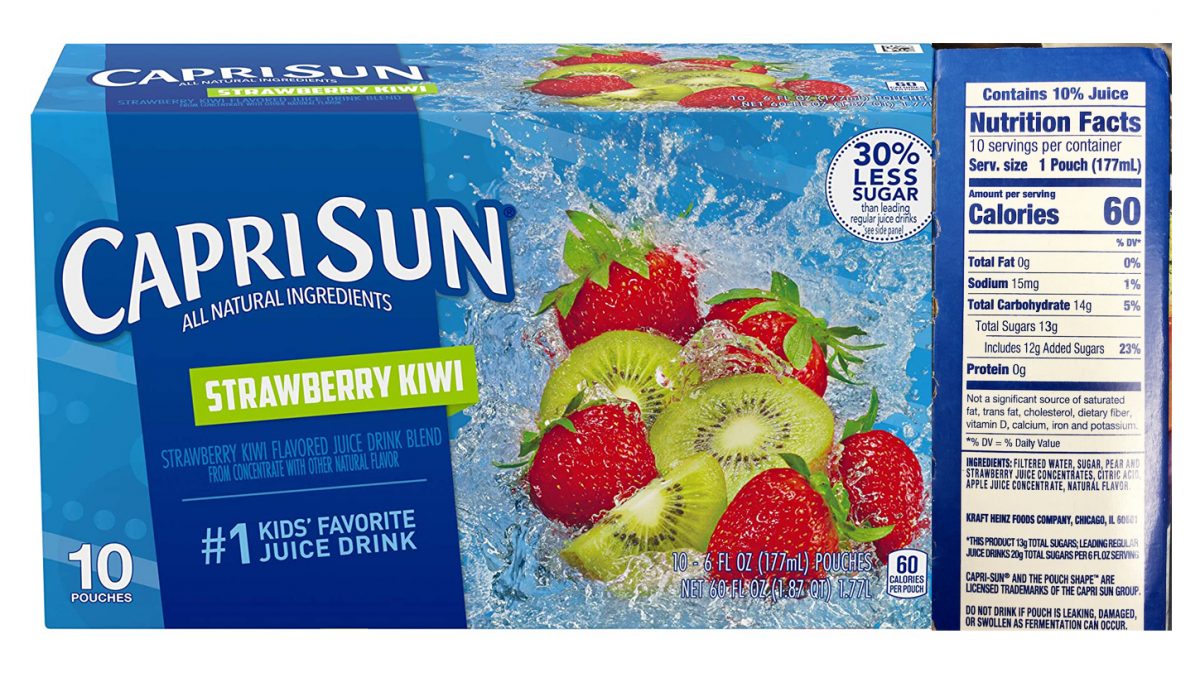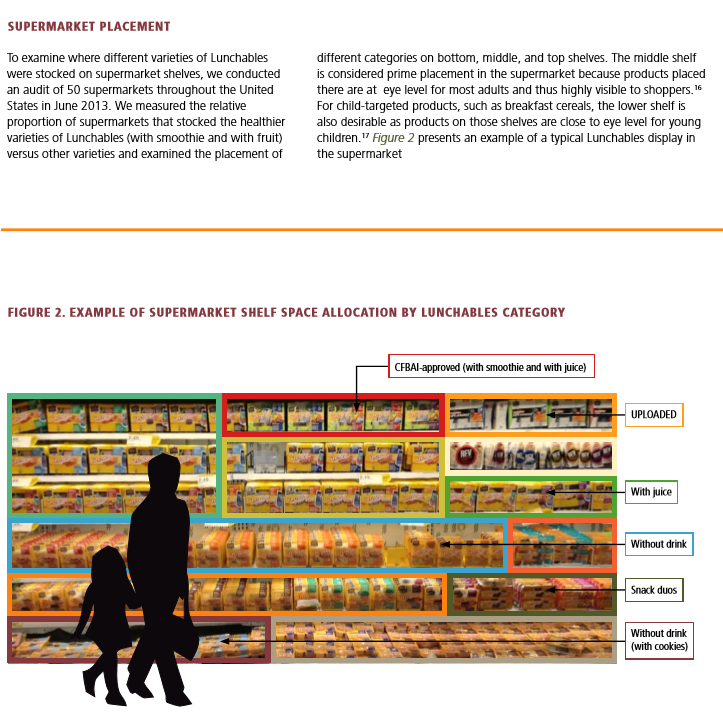Packaging, Promotion, & Claims
Targeted marketing of “children’s” foods to children and their parents affects parents’ attitudes about these products. Nutrition-related claims on product packages and other marketing messages can mislead parents to believe that high-sugar food and drinks and unhealthy fast food kids’ meals are the best options for children.
Food companies target children in supermarkets and other retail locations. They use licensed characters and cartoon brand characters on food packages to get children’s attention and place unhealthy products on lower shelves at children’s eye level. Freestanding and end-cap displays also appeal to children. The goal: to get kids to “pester” their parents to buy the products.
Learn More About Packaging, Promotion, & Claims
Research
- Fleming-Milici, F., Gershman, H., Pomeranz, J., & Harris, J. (2023). Effects of a front-of-package disclosure on accuracy in assessing children’s drink ingredients: Two randomised controlled experiments with US caregivers of young children. Public Health Nutrition, 1-12.
- Fleming‐Milici, F., Phaneuf, L., & Harris, J. L. (2022). Marketing of sugar‐sweetened children’s drinks and parents’ misperceptions about benefits for young children. Maternal & Child Nutrition, e13338.
- Harris JL, Pomeranz JL. (2021). Misperceptions about added sugar, non-nutritive sweeteners and juice in popular children's drinks: Experimental and cross-sectional study with U.S. parents of young children (1-5 years). Pediatric Obesity.
- The Sugary Drink FACTS and Baby Food FACTS reports include detailed sections reporting nutrition and other on-package marketing for those product categories.
- Harris, J.L., Webb, V., Sacco, S.J. & Pomeranz, J.L. (2020). Marketing to children in the supermarket: An opportunity for public policy to support parents and improve children’s diets. International Journal of Environment and Public Health, 17, 1284.
- Pomeranz, JL & Harris, J.L. (2020). Children’s fruit “juice” drinks and FDA regulations: Opportunities to increase transparency and support public health. American Journal of Public Health.
- Romo-Palafox MJ, Pomeranz JL, Harris JL. (2020). Infant formula and toddler milk marketing and caregiver’s provision to young children. Matern Child Nutr, 2020;16(3):e12962.
- Harris, J.L., Hyary, M., & Schwartz, M.B. (2016). Effects of offering “look-alike” products as Smart Snacks in schools. Childhood Obesity, 12(6), 432-439.
- Munsell, C., Harris, J.L., Sarda, V., & Schwartz, M.B. (2016). Parents’ beliefs about the healthfulness of sugary drink options: Opportunities to address misperceptions. Public Health Nutrition, 19(1), 46-54.
- Kraft Lunchables: Food marketing FACTS in focus. Rudd Report. April 2014. Just 5 of 42 Lunchables products met nutrition standards for foods that can be advertised to children; and healthier products were more likely to be placed on the top shelf in supermarkets, above children’s eye level.
- Bragg, M., Liu, X., Sarda, V., Roberto, C.A., Harris, J.L., & Brownell, K.D. (2013). The use of sports references in marketing food and beverage products in supermarkets. Public Health Nutrition, 16(4), 738-742.
- Harris, J.L., Thompson, J., Schwartz, M.B., & Brownell, K.D. (2011). Nutrition-related claims on children’s cereals: What do they mean to parents and do they influence purchasing? Public Health Nutrition, 14(12), 2207-2212.
- Harris, J.L., Schwartz, M.B., & Brownell, K.D. (2010). Marketing foods to children and adolescents: Licensed characters and other promotions on packaged foods in the supermarket. Public Health Nutrition, 13(3), 409-417.
Resources
Room for Confusion: Labeling of Fruit Drinks, Flavored Water, and Unsweetened Juices
Cereal FACTS: "In Reach" Video
Understanding the Nutrition Facts Panel

